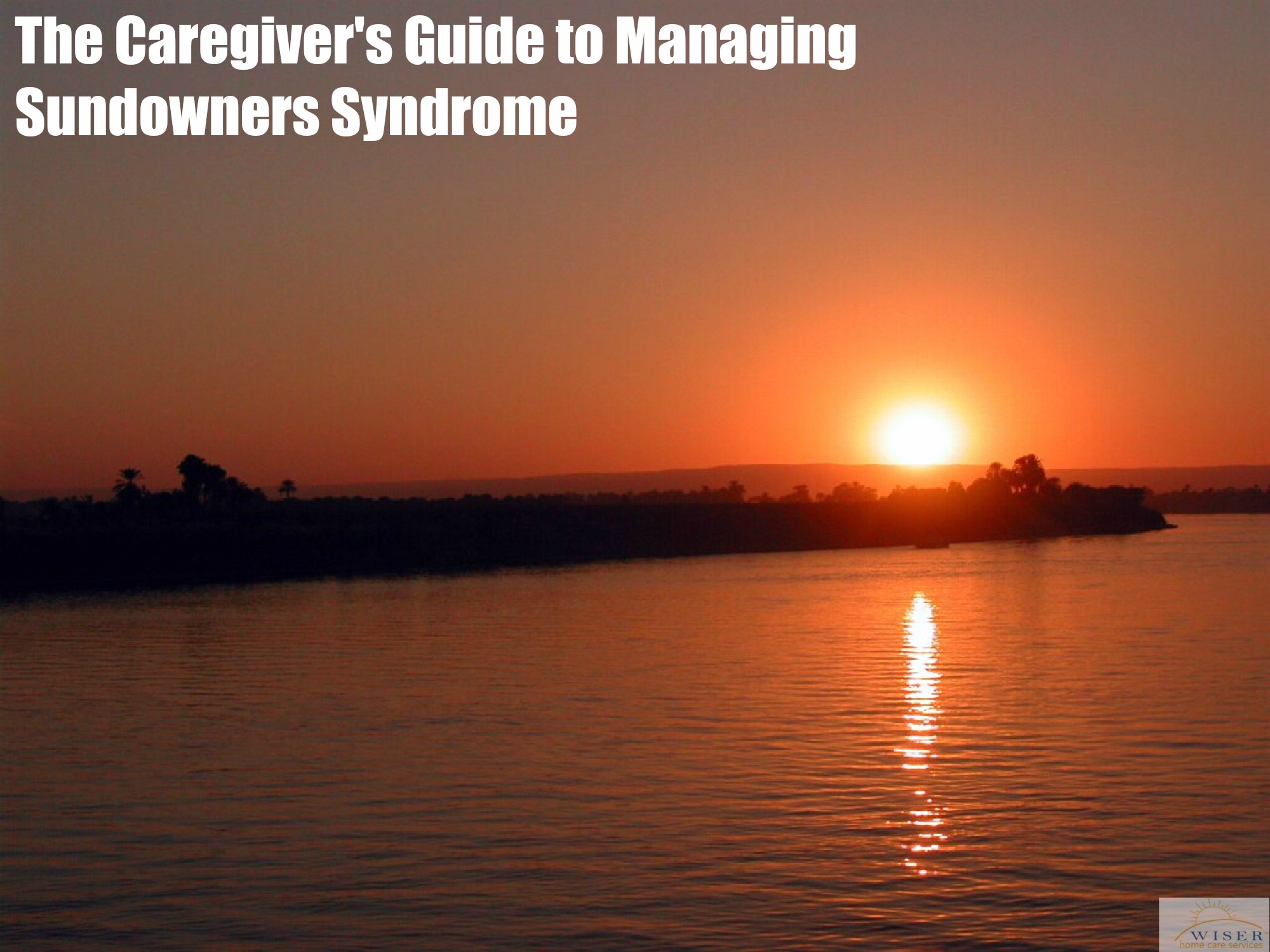While the east coast was recently hit with snowmaggedon 2016, if you were to step outside here on the west coast you would probably think that early spring has begun. It’s true we have had a fairly mild winter so far. We are crossing our fingers it stays that way. In fact, this week marks the winter half way point. We are getting so close to spring we can almost smell it.
Despite how mild of a winter it has been, for our elderly loved ones even a mild winter can pose significant risks to their health. Over the last several weeks we have explored the perils of winter for our elderly loved ones. We started by exploring topics such as hypothermia, fall prevention, social isolation, seasonal affective disorder and the flu. This week we will be wrapping up our series by exploring sundowners syndrome and how it affects the elderly.
According to Caring.com, the term Sundowners Syndrome describes “the onset of confusion and agitation that generally affects people with dementia or cognitive impairment and usually strikes around sunset.”
Research suggests that 1 in 5 elderly who suffer from a form of dementia also suffer from sundowners syndrome. However, sundowners syndrome can also affect elderly who do not suffer from dementia.
While the syndrome can happen during any time of the year, it can worsen during the winter time due to the seemingly longer nights and shorter days. Knowing the symptoms, what to expect and how to help your elderly loved one through this difficult time can greatly decrease the effects of sundowners syndrome.
What to Look For
As we mentioned, sundowners syndrome typically starts at sunset. The transition between light and dark can cause confusion for the sufferer. As the afternoon grows closer to sunset keep an eye out for the following behavior:
- The three A’s (Anger, Agitation and Anxiety
- Restlessness
- Confusion and disorientation
- Suspiciousness
- Mood swings
At this time, doctors and scientists can’t pinpoint exactly why sundowning happens, but according to caring.com, many scientists believe people with dementia are more susceptible to it due to changes in the brain that can affect one’s “inner clock.” Furthermore, scientists believe that some common triggers include: too much activity at the end of a day, winter weather and SAD, low light, internal imbalances such as abnormal hormone levels and fatigue at the end of the day.
How to Prevent and/or lessen the Effects of Sundowners Syndrome
Since scientists can’t determine exactly why sundowning happens it can often prove to be a challenge for loved ones and caregivers to deal with. Knowing the aforementioned triggers and how to avoid/lessen their effects goes a long way in reducing your loved one’s risk of experiencing sundowners syndrome.
The following tips from the Mayo Clinic will also help decrease the effects of sundowners syndrome for your elderly loved one:
- Maintain a predictable routine
- Make sure your loved one gets plenty of time in light during the day
- Try to limit daytime napping
- If your loved one drinks caffeinated beverages, try to limit them to just the morning time
- Keep a night light on to reduce agitation
- Sometimes background noises and stimulation from television can be upsetting so try to avoid this during the night time
If you care for an elderly loved one and would like help developing a care plan to help prevent them from experiencing the side effects of sundowners sydrome please feel free to contact us. We can help your family establish a care plan to personally accommodate your loved one’s needs.


One thought on “The Caregiver’s Guide to Managing Sundowners Syndrome”